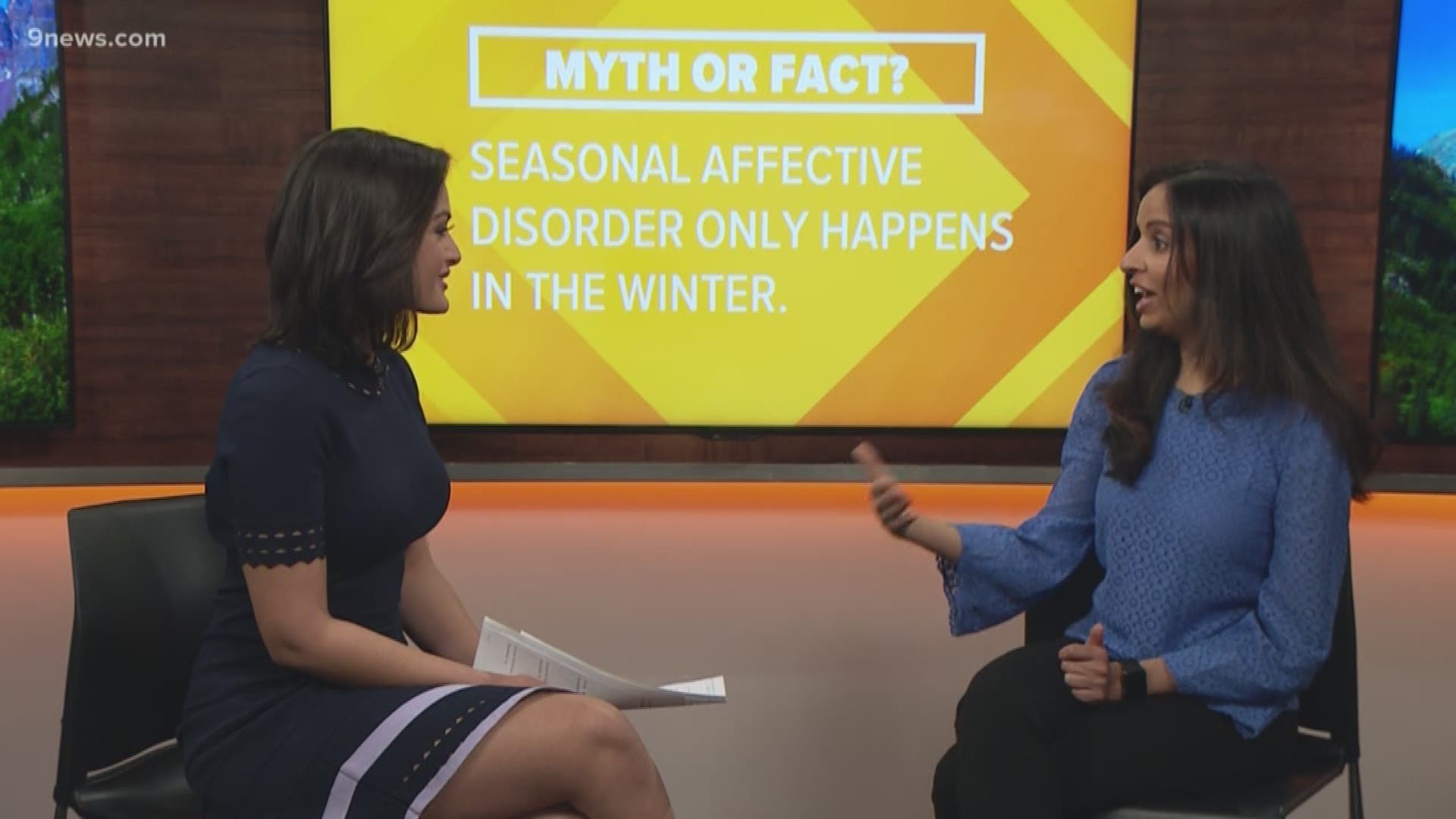DENVER — Seasonal Affective Disorder (known as SAD) describes a recurrent pattern of depressive episodes that vary by season.
Studies show up to 10% of the population might be affected by SAD and younger people are more susceptible to the symptoms.
Many don’t even recognize the condition, thinking that they are just having the “winter blues” from shorter days and longer nights but the weather and light changes can actually trigger emotional responses in the body.
9Health Expert Dr. Payal Kohli joined us Monday morning to discuss some of the common myths associated with SAD.
Myth 1: Seasonal Affective Disorder (SAD) is “all in your head”
Fact: Certainly, there have been studies that have questioned whether SAD really exists. For many, however, SAD is a real psychiatric depressive syndrome with real effects on mood and functioning.
By definition, it is a recurring disorder that can have a seasonal pattern and symptoms can last up to 40% of the year. Up to 67% of those diagnosed with SAD will face a recurrence the following winter and 33-44% will go on to develop non-seasonal depressive episodes.
Many factors have been thought to be involved, including circadian rhythm (“body clock”), Vitamin D deficiency, sensitivity of your retina to light and changes in timing of melatonin production.
Myth 2: Seasonal Affective Disorder Only Happens in the Winter Months
Fact: SAD is more common in the winter but it may also occur for some in the spring and summer. Winter-onset SAD is associated with atypical depressive symptoms like excess sleeping, increased appetite, and craving for carbohydrates.
Conversely, summer-onset SAD is more commonly associated with typical depression symptoms including insomnia and lack of appetite.
The diagnosis of SAD requires the presence of at least five depressive symptoms for two consecutive weeks, including a depressed mood, a loss of interest in normal activities, a loss of energy/fatigue, a change in appetite, a change in sleep patterns, feelings of guilt and even suicidal thoughts.
Myth 3: The incidence of SAD in Colorado is low because of all our sunlight
Fact: According to a study from the Denver Public Health department in 2018 that looked at electronic medical records and surveys, one in eight Denver residents is depressed.
Although a decrease in light during the winter months is thought to be one cause of SAD, there is evidence that people who move from lower to higher altitudes are also more susceptible to SAD.
Women are also more commonly affected than men (4:1 ratio) and prevalence decreases with age, so younger people are more susceptible. So, SAD doesn’t discriminate and can affect us even here in Colorado.
Myth 4: Seeking treatment for depression is a sign of “weakness”
Fact: Just like our physical health needs treatment and medications from time to time, so does our mental health. And with SAD, treatments may only be needed during the time when you are having symptoms. Treatment can include therapy, medications and even bright light therapy, which has an anti-depressant effect. SAD usually goes into remission with a seasonal pattern.
If you think you may have SAD, go to www.9healthfair.org and take the depression survey and learn how you can get connected with local resources.
.SUGGESTED VIDEOS | Local stories from 9NEWS

